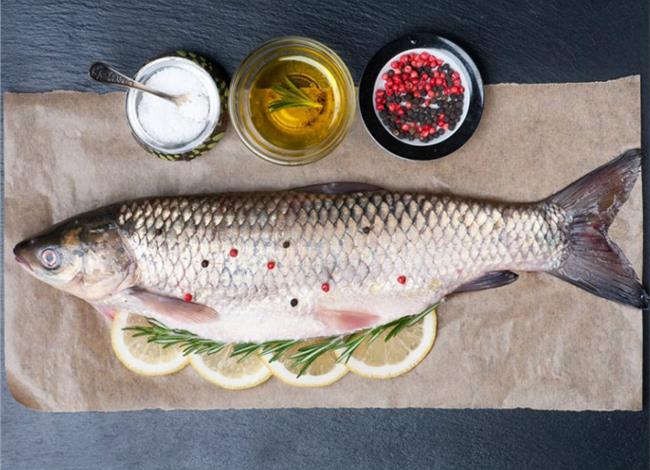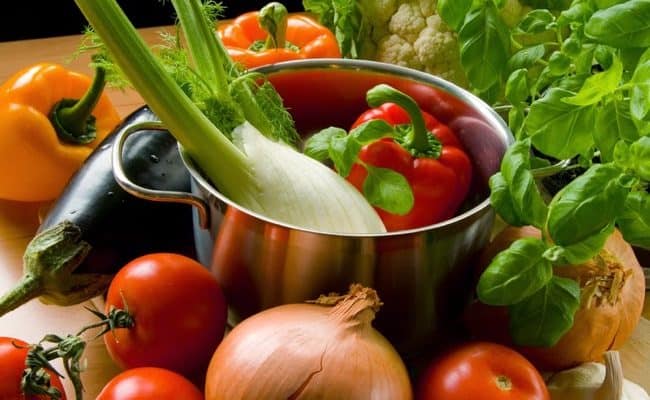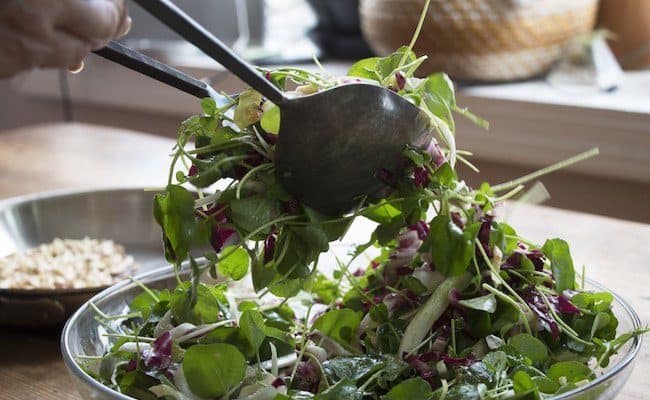
There are many ways to make healthy cooking easy; healthy cooking doesn’t have to be complicated. No matter what you cook, there can be simple ways to bump up the nutritional value. Small changes to cooking can really affect the outcome, and you don’t need to feel like you are depriving yourself.
Here are some easy tips for healthier cooking.
# 1 – Add more spices
Spices have some of the highest antioxidant amounts in all of the food categories. In fact, a teaspoon of dried oregano can contain as much antioxidants as a cup of sweet potatoes.
For healthier cooking, add generous amounts of spices to your dishes.
Use more spices and less salt for a diverse flavor profile. Get outside your comfort zone and experiment with new spices like clove, ginger and turmeric.
#2 – Plan meals around the vegetables
The USDA has a recommendation that Americans should make ½ their plate of fruits and vegetables at all meal times.
Most Americans fall far short of this recommendation. In order to help reach this goal, start planning your meals around vegetables as the focus of the meal and see how many fruits and vegetables you can have in a meal.
If you eat meat, make it more of a side item instead of the main focus.
#3 – Do prep work ahead of time
A big stumbling block for healthier cooking is the amount of prep time it can take. Chopping vegetables, meat or other tasks can seem mounting after a long day.
To get around this obstacle, do some easy prep work, like chopping vegetables, on a weekend day. That way during the week, adding some vegetables can be quick and easy.
#4 – Add frozen vegetables with pasta
If you are boiling pasta or another starch, throw in some frozen vegetables the last few minutes of cooking. This can be an easy way to get more vegetables and you don’t have to have a separate pan.
You can also get away with using less pasta but not less volume by adding in vegetables.
#5 – Munch on fruits and vegetables while you cook
This is an especially good tip when cooking dinner, as you may already be hungry by the time you are cooking.
Munching on fruits or vegetables will start filling you up with fiber, nutrients and not a lot of calories. When it is time to eat, you won’t be as hungry and won’t need to eat as big a meal.
#6 – Make enough for leftovers
When you cook, make enough so that there are portions leftover. This can serve for another meal whether it’s the next day or put in the freezer for an easy meal on the go in the future.
#7 – Serve your meals on smaller plates
If you eat off smaller plates, you will be more likely to eat less because less food is needed to fill up the plate. Humans tend to gage if the amount of food will be satisfying based on how full a plate looks.
#8 – Know which organic produce may matter more
Whether you eat organic or not is a personal choice, but research does suggest organic produce can have lower pesticide levels.
Organic food is more costly than conventional and is not realistic for all people.
If you are wondering which food may be more important to eat organic, a very general rule of thumb is that produce that has an outer layer, like melons, bananas or avocados, are not as imperative to buy organic.
Produce like berries, leafy greens and tomatoes may be more of a concern when deciding between organic and conventional.
#9 – Buy grass fed, wild caught and local
The fatty acid profile is different when comparing wild caught or grass fed meats compared to corn fed meat.
Buying grass fed or wild caught when possible can have health advantages like having higher omega 3 levels.
#10 – Use less salt and sugar than a recipe calls for
Cut back gradually on adding sugar and salt to recipes, and chances are your family won’t even notice.
Some recipes do need salt or sugar in order for the recipe to turn out right, but you can often cut down the amount and it won’t affect the quality.
Most Americans get too much added sugar and salt, so cutting some out of your cooking can be beneficial and easy to do. (See also: How much salt per day?)
#11 – Read the ingredient labels
Cook with real foods as often as possible that don’t have ingredient labels. When you do add in something from a package, look at the ingredients.
Have staples in your cooking that have limited hard to pronounce preservatives, artificial flavors and colors. If you are not sure what an ingredient is, do your own research on it.
#12 – Pair protein, fiber and healthy fats together for balanced meals
Eating these three together promotes stabile blood sugar levels and can help you get a diverse amount of nutrients.
Healthy fats can include olive oil, grapeseed oil, coconut oil, avocados and nuts.
Fiber can come from whole grains, vegetables, fruits and legumes. Protein can come from lean meats, legumes, dairy, soy products or nuts.










